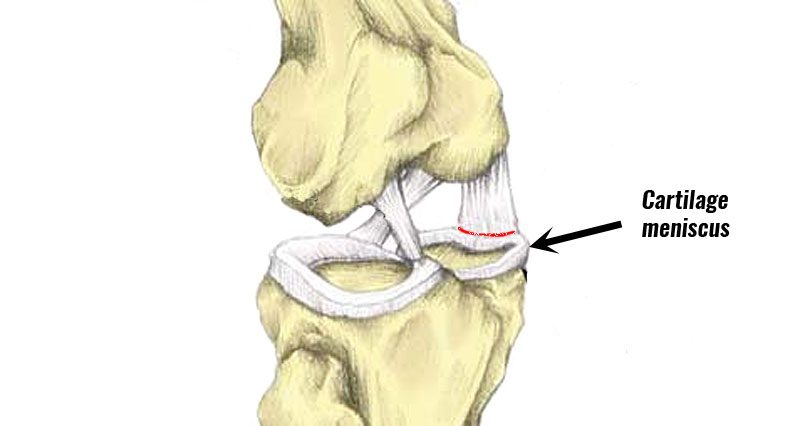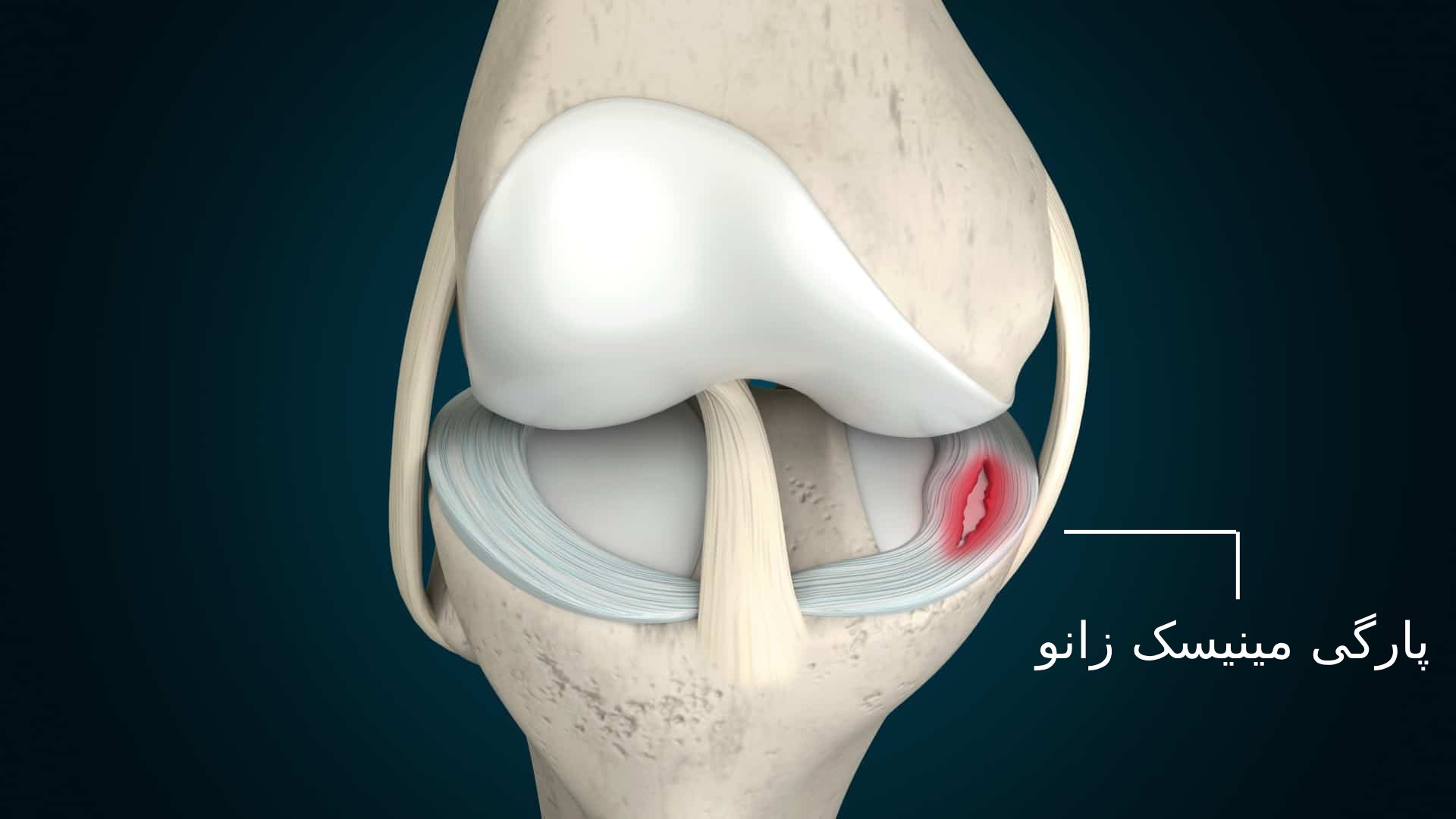Anatomy and Function of the Meniscus

The meniscus is a C-shaped piece of cartilage that acts as a shock absorber and cushions the knee joint. It is located between the femur (thighbone) and the tibia (shinbone). The meniscus helps to distribute weight evenly across the knee joint, reducing stress on the cartilage and bones.
Meniscus Structure and Location
The meniscus is made up of fibrocartilage, which is a tough, flexible tissue that can withstand a lot of pressure. There are two menisci in each knee: the medial meniscus (on the inside of the knee) and the lateral meniscus (on the outside of the knee). Both menisci are attached to the tibial plateau (the top surface of the tibia) and the ligaments surrounding the knee joint.
Meniscus Function
The meniscus plays a vital role in the proper functioning of the knee joint. Its primary functions include:
- Weight distribution: The meniscus helps to distribute weight evenly across the knee joint, reducing stress on the cartilage and bones.
- Shock absorption: The meniscus acts as a shock absorber, cushioning the knee joint during impact activities.
- Joint stability: The meniscus helps to stabilize the knee joint, preventing excessive movement and rotation.
Types of Meniscus Tears
Meniscus tears can occur in various locations and severities. Some common types of meniscus tears include:
- Horizontal tear: This type of tear occurs across the width of the meniscus.
- Vertical tear: This type of tear runs vertically through the meniscus.
- Radial tear: This type of tear is a combination of horizontal and vertical tears.
- Bucket-handle tear: This type of tear is a large, vertical tear that detaches a large portion of the meniscus from the tibial plateau.
Factors Affecting Meniscus Tear Severity
The severity of a meniscus tear can vary depending on several factors, including:
- Location of the tear: Tears in the outer portion of the meniscus are often less serious than tears in the inner portion, as the outer portion has a better blood supply.
- Size of the tear: Larger tears are generally more severe than smaller tears.
- Type of tear: Some types of tears, such as bucket-handle tears, are more severe than others.
Causes and Risk Factors for Meniscus Tears

The meniscus, a C-shaped piece of cartilage in the knee, acts as a shock absorber and helps to distribute weight evenly. Tears in the meniscus are common injuries, particularly among athletes and individuals who participate in activities that involve twisting or pivoting movements. These tears can occur due to a variety of factors, including trauma, degenerative changes, and age-related wear and tear.
Causes of Meniscus Tears
Meniscus tears are commonly caused by a sudden twisting or pivoting motion, often while the knee is bearing weight. This type of injury can occur during sports activities, such as basketball, football, and skiing, or during everyday activities, such as walking or running.
- Sports Injuries: Meniscus tears are prevalent among athletes who participate in sports that involve pivoting, twisting, or rapid changes in direction. Examples include basketball, football, soccer, tennis, and skiing.
- Trauma: Direct trauma to the knee, such as a fall or a direct blow, can also cause a meniscus tear. This can happen in accidents, falls, or during contact sports.
- Degenerative Changes: Over time, the meniscus can wear down and become more prone to tearing. This is especially common in older adults, as the meniscus naturally deteriorates with age. The process of degeneration can be accelerated by repetitive stress or overuse.
Risk Factors for Meniscus Tears
Certain factors can increase the risk of developing a meniscus tear.
- Age: The risk of a meniscus tear increases with age. This is because the meniscus becomes less flexible and more prone to tearing as we age. Research suggests that meniscus tears are more common in individuals over the age of 40.
- Activity Level: Individuals who participate in high-impact activities or sports that involve twisting and pivoting movements are at a higher risk of developing a meniscus tear. This is particularly true for athletes who engage in activities such as basketball, football, and skiing.
- Previous Knee Injuries: Individuals who have previously sustained a knee injury, such as a ligament tear or a fracture, are at a higher risk of developing a meniscus tear. This is because previous injuries can weaken the surrounding structures and make the meniscus more susceptible to tearing.
- Obesity: Being overweight or obese puts additional stress on the knees, increasing the risk of meniscus tears. This is because excess weight increases the load on the knee joint, which can lead to wear and tear on the meniscus.
Mechanism of Injury for Different Types of Meniscus Tears
Meniscus tears can occur in various ways, depending on the specific mechanism of injury. The most common types of meniscus tears include:
- Horizontal Tear: This type of tear occurs when the meniscus is compressed and stretched, causing it to split horizontally. It often occurs in younger individuals due to sudden twisting or pivoting movements.
- Vertical Tear: This type of tear occurs when the meniscus is torn vertically, either partially or completely. It can be caused by a direct blow to the knee, a sudden twisting motion, or a combination of both.
- Bucket Handle Tear: This type of tear is a more severe form of vertical tear where a large piece of the meniscus tears and flips up, resembling a bucket handle. It often occurs in athletes who participate in high-impact sports.
- Degenerative Tear: This type of tear is caused by age-related wear and tear on the meniscus. It is more common in older adults and may not be associated with a specific injury.
Symptoms and Diagnosis of Meniscus Tears

A meniscus tear can cause a range of symptoms, from mild discomfort to severe pain and instability. Understanding these symptoms is crucial for timely diagnosis and appropriate treatment. The diagnosis of a meniscus tear typically involves a combination of physical examination and imaging tests.
Symptoms of a Meniscus Tear
The symptoms of a meniscus tear can vary depending on the severity and location of the tear. Some common symptoms include:
- Pain: A sharp, sudden pain in the knee, often occurring during an injury, is a common symptom. The pain may be localized to a specific area of the knee or may radiate down the leg.
- Swelling: Swelling in the knee joint is another common symptom, often developing within a few hours of the injury.
- Clicking or Popping: A clicking or popping sensation in the knee during movement can be indicative of a torn meniscus.
- Locking: The knee may lock in a bent position, making it difficult to straighten. This is a more serious symptom, suggesting a significant tear.
- Stiffness: Difficulty bending or straightening the knee is a common symptom.
- Giving Way: The knee may feel unstable or “give way” during activities, especially when bearing weight.
Diagnostic Procedures for Meniscus Tears
Diagnosing a meniscus tear usually involves a combination of physical examination and imaging tests.
Physical Examination
A thorough physical examination is the first step in diagnosing a meniscus tear. The doctor will ask about your symptoms, the mechanism of injury, and your medical history. They will also perform a physical exam, assessing your knee’s range of motion, stability, and tenderness.
Imaging Tests
Imaging tests can help confirm the diagnosis and determine the severity of the tear.
- Magnetic Resonance Imaging (MRI): MRI is considered the gold standard for diagnosing meniscus tears. It provides detailed images of the knee joint, allowing the doctor to visualize the meniscus and any tears.
- X-ray: While X-rays can rule out other conditions like fractures, they are not as effective as MRI in visualizing the meniscus.
Arthroscopy
Arthroscopy is a minimally invasive surgical procedure that can be used to diagnose and treat meniscus tears. A small camera is inserted into the knee joint, allowing the doctor to directly visualize the meniscus. This procedure can also be used to repair or remove the torn portion of the meniscus.
Limitations and Benefits of Diagnostic Methods
Each diagnostic method has its own limitations and benefits:
| Diagnostic Method | Benefits | Limitations |
|---|---|---|
| Physical Examination | Non-invasive and readily available | May not be sufficient to diagnose a meniscus tear, especially in complex cases. |
| MRI | Provides detailed images of the knee joint, allowing accurate diagnosis of meniscus tears | Expensive and not always readily available. |
| X-ray | Can rule out other conditions like fractures | Not as effective as MRI in visualizing the meniscus. |
| Arthroscopy | Allows direct visualization of the meniscus and can be used to treat tears | Invasive procedure with associated risks. |
A meniscus tear, a cruel twist of fate that can sideline even the most formidable athlete. Imagine the agony, the sudden sharp pain that rips through your knee, leaving you crumpled on the field, your dreams shattered. A similar fate befell Justin Jefferson , a young star whose ascent was temporarily halted by a meniscus tear.
But just like Jefferson, who returned with a vengeance, those who suffer from a meniscus tear can find solace in the possibility of a comeback, fueled by unwavering determination and the expert care of medical professionals.
A meniscus tear, a cruel twist of fate, can leave an athlete’s dreams shattered. The agony is real, the recovery arduous. JJ McCarthy, the star quarterback, faced this very challenge, undergoing surgery to repair his torn meniscus. jj mccarthy knee surgery His story serves as a reminder that even the strongest athletes are vulnerable to these debilitating injuries, and the path back to the field is long and demanding.
Meniscus tears, a silent enemy lurking within the knee, can strike at any moment, demanding resilience and unwavering determination.
